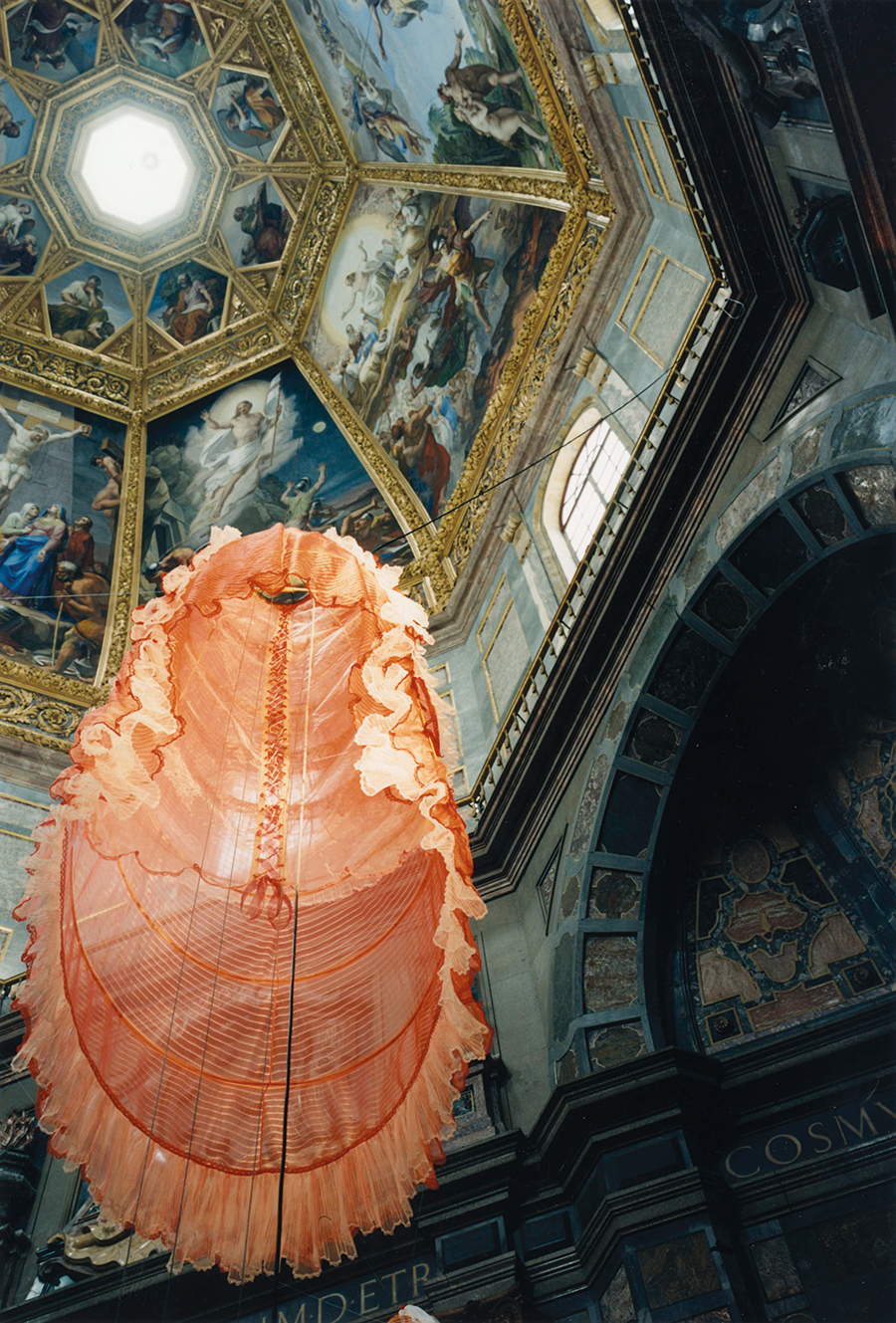A New Way of Explaining Fashion: Gianfranco Ferré’s Exhibition at the Medici Chapel
‘My sense was that a shift had happened in what is only now called fashion exhibition-making’
‘My sense was that a shift had happened in what is only now called fashion exhibition-making’

Under the umbrella of the Florence Fashion Biennale’s curatorial team – made up of public-relations expert Luigi Settembrini, curator and critic Germano Celant and editor Ingrid Sischy – the ‘Visitors’ project was curated by Settembrini and the-then editor of Vogue Italia, Franca Sozzani. Within the broader concerns of questioning the evolving relationship and connections between fashion and art, the project was an attempt to keep the commercial at bay. The ‘Visitors’ section paired fashion designers with various museums. Each looked at the ways in which fashion’s language might create a dialogue with a particular site associated with renaissance culture.
Against the odds, designers and museum directors agreed to the collaborations. The press around the project ranged from scorn to interest with varying degrees of scepticism, often referring to the pretension of fashion’s nerve in occupying such spaces, as though the project was about re-classification.
When I visited the installations – and the fashion designer Gianfranco Ferré’s in particular – my sense was that a shift had happened in what is only now called fashion exhibition-making. Ferré created a dramatic mise-en-scène made up of crinolines hung in the Medici Chapel: domestic and urban domes came together. But what was incredible was that they were three metres wide and not made by Ferré but by the costumiers Brancati Costumi Teatrali and that a wind machine caused them to sway gently in the space. Their lightness was the point (crinolines replaced multi-layered petticoats). So, they were at once props and historically revealing and suggestive. It was a new way of explaining fashion.





















